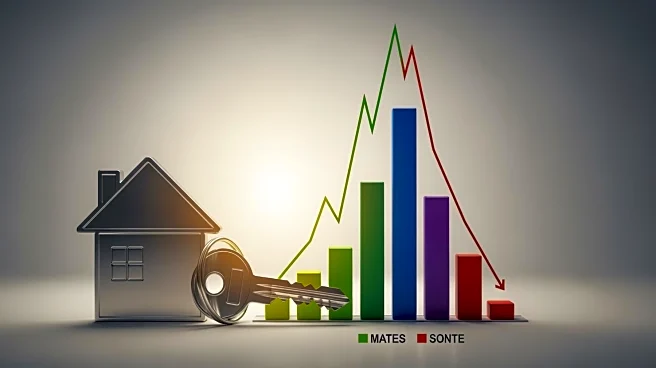What's Happening?
In 2025, mortgage rates across the United States have shown significant variation, with New Jersey recording the highest average rate at 6.85% in the second quarter. This aligns with New Jersey's expensive
housing market and high property tax burdens. Other states with high rates include Connecticut at 6.48% and New York at 6.25%. Conversely, Alabama experienced the largest quarter-over-quarter decrease in mortgage rates, dropping by 16.7%. The easing of mortgage rates follows two years of high borrowing costs, yet buying a home remains challenging as the median age of homebuyers has increased to 38 years in 2024, up from 30 years in 2010. The data, sourced from WalletHub, highlights the diverse mortgage landscape across the U.S., with Western and Southern states like Idaho, Hawaii, and Utah showing lower rates.
Why It's Important?
The fluctuation in mortgage rates is crucial for the U.S. housing market, impacting affordability and homeownership rates. High rates in states like New Jersey could deter potential buyers, exacerbating housing affordability issues. Conversely, states with decreasing rates, such as Alabama, may see increased buyer interest, potentially boosting local real estate markets. The overall easing of rates, influenced by Federal Reserve actions and Treasury yield changes, suggests a stabilizing trend that could benefit prospective homebuyers. However, the increased median age of homebuyers indicates that financial barriers continue to delay homeownership, affecting demographic trends and economic mobility.
What's Next?
Forecasts suggest that mortgage rates will remain steady through the remainder of 2025, with the Mortgage Bankers Association predicting an average 30-year rate of 6.5% by year-end. Fannie Mae projects a slightly lower rate of 6.4%. These predictions imply a stable borrowing environment, potentially encouraging more individuals to enter the housing market. However, ongoing economic conditions and Federal Reserve policies will continue to influence rate adjustments, impacting buyer decisions and market dynamics.
Beyond the Headlines
The shift in mortgage rates and homebuyer demographics may have long-term implications for urban planning and housing policy. As more Americans delay homeownership, there could be increased demand for rental properties and multifamily housing solutions. This trend might prompt policymakers to address housing affordability and support initiatives that facilitate homeownership for younger generations.












